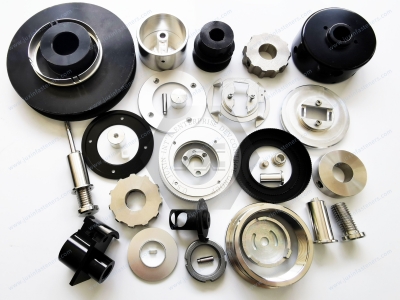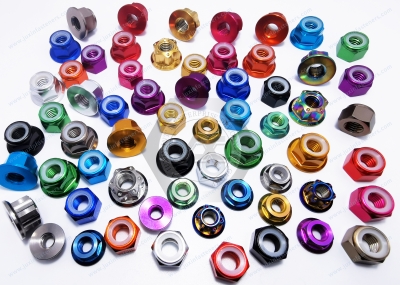Call Us
+86 136 6007 9809
Call Us
+86 136 6007 9809
Nov. 02, 2023
一、Aluminum connection methods
Different connection methods can connect Aluminum; the main ones are as follows:
1. Welding: Welding is joining two aluminum pieces together by melting them with a heat source, and techniques such as TIG welding and MIG/MAG welding can be used. This type of connection has a high degree of firmness but requires specialized personnel. Welding nails belong to high-strength rigidity connection fasteners, Cheese head studs for arc stud welding, welding nail specifications for the nominal diameter Ф10 ~ Ф25mm, welding before the total length of 40 ~ 300 mm. Weld stud welding.
The welding stud (or column metal) is placed on the weld base material; subsequently, lifting the welding stud while conducting current between the welding stud and the weld base material to stimulate the arc, the arc will weld the end of the weld stud and weld the surface of the base material to dissolve, and the formation of the welded molten pool; next, the welding stud and the weld base material relative motion, the welding stud at a certain speed under the controlled insertion of the molten pool; finally, the termination of the weld current, the arc Finally, the welding current is terminated, the arc is extinguished, while the molten pool solidifies, the welding process is complete, the formation of a whole cross-section fusion of the weld.
Peg welding is between the peg and the base material through current, local heating, melting the peg and local base material, and at the same time, pressure to squeeze out the liquid metal so that the entire cross-section of the peg and the base material form a solid combination of welding methods. It can be divided into arc, nail, and storage energy welding.
2. Riveting: Riveting is done through the rivets, which will be connected to the aluminum pieces of the way, generally applicable to connecting the plate or tube. This way is simple and easy, but the fasteners at the connection need to choose the right one. Riveting is good in shear and weak in tension. The most prominent feature of riveted joints is excellent impact resistance and vibration resistance. In addition, it also has simple process equipment, reliable connection, slight deformation of components, good fatigue resistance, insensitive to stress concentration, and other characteristics. Commonly used are semi-circular heads, countersunk head rivets, blind rivets, and semi-hollow rivets. Semi-circular head rivets: semi-circular head rivets are used in boilers, bridges, containers, and other steel structures for riveting fasteners, rivet nuts, rivet screws, and rivet nut columns. Rounded Head Quarter-Turn Captive Panel Screws with Rivet-Mount Nut, Steel Twist-Resistant Rivet Nuts, Stainless Steel Twist-Resistant Rivet Nuts, Aluminum Twist-Resistant Rivet Nuts, Heavy Duty Twist-Resistant Rivet Nuts, Twist-Resistant Rivet Nuts for Soft Materials, Rivet Nuts for Plastic and Composites, Screw-to-Install Rivet Nuts, Stainless Steel Low-Profile Rivet Nuts, Insulating Rivet Nuts, Stainless Steel Press-Fit Nuts for Sheet Metal, Flush-Mount Press-Fit Nuts for Sheet Metal, Stainless Steel Aligning Press-Fit Nuts for Sheet Metal, Stainless Steel Press-Fit Nuts for Soft Metal and Plastic, Press-Fit Threaded Standoffs with Closed End.Miniature Press-Fit Threaded Standoffs with Open End, Miniature Press-Fit Threaded Standoffs with Open End, Press-Fit Snap-Top Supports.
3. Threaded connection: This is the same as wood, using screws and nuts to connect the parts. Choosing a suitable fastener is very important. Threaded fasteners are mechanical parts with either internal or external threads and are generally used as fasteners to facilitate the assembly of multiple components. The most common types of threaded fasteners are screws, nuts and bolts. However, other threaded fasteners exist, such as cage nuts, threaded inserts, and rods.
Bolting: Used to join two thin parts. There are through holes in the connected parts. Ordinary bolts have a clearance between the rod and the hole, and the through-hole has low processing requirements, a simple structure, is easy to install and dismantle, and is widely used. Reamed hole bolts (GB/T 27) hole and screws often use transition fit such as H7/m6, H7/n6. This connection can accurately fix the relative position of the connected parts. Suitable for bearing transverse loads, but the processing accuracy of the hole requires high, often with drilling, reaming, and so on.
Double-head bolt connection: used for one of the connected parts, which is thicker and unsuitable for bolt connection. Thiner-related parts have poor strength and must be frequently disassembled. In the comprehensive parts in the processing of threaded holes, thin parts in the processing of light holes, bolts screwed into the threaded holes, with a nut compression of delicate parts. When disassembling, only the nut needs to be screwed down without removing the double-headed bolt. Damage to the threaded holes in large connected parts can be avoided.
Screw connection: The bolts (or screws) are screwed directly into the threaded holes of the connected parts without nuts. The structure is simpler and more compact than the double-head bolt. Used for two corresponding parts in a thicker, but do not need to be disassembled frequently to avoid threaded hole damage.
Tightening screw connection: the use of screwing into the threaded hole in the parts of the threaded end against the surface of the other part or into the other part of the pit to fix the relative position of the two parts. This connection is a simple structure; some parts can be arbitrarily changed in the circumferential or axial position to adjust, such as the electrical switch knob fixing.
Countersunk head screws: used for strength requirements are not high; the thread diameter is less than 10mm on occasion. Screw head or partially immersed in the connected parts, this structure is mainly used for the requirements of the external surface flat occasions, such as instrument panels.
Self-tapping screws: used to connect the occasions of high strength requirements. However, the bottom hole should generally be made in advance. If the use of self-drilling self-tapping screws with a drill part, it is not required to pre-produce the bottom hole for non-ferrous metals, wood, etc.
Wood screw connection: generally used for the connection of wooden structures. Wooden parts depending on the hardness of the material and the length of the wood screws, can not be prefabricated or made a specific size, depth of the prefabricated holes.
Self-tapping locking screw connection: its threads for the curved triangular interface, the screw by the surface hardening, can be screwed into the metal material of the prefabricated hole, extrusion to form internal threads. Extruded to form the internal thread, then cut to improve the strength by more than 30%. Screws do small tensile strength of 800MPa. Self-tapping locking screws have a low tightening torque and high locking performance. It has been used in the household appliances, electrical, and automotive industries for many years!
Fasteners—combined parts connection: washers and externally threaded fasteners are standard between the professional factory production and assembly of supply sets. This connection is easy to use, time-saving, safe, and reliable, and it is commonly used in close fastener connection occasions, such as electrical cabinet terminals.


二、 Aluminum commonly used fasteners
1. Screws: Screws are commonly used fasteners to connect parts, usually divided into two types hexagonal screws and hexagonal screws; hexagonal screws have a more uniform support area and more uniform force when tightening, and hexagonal screws are more accessible to pull. Alloy Steel Socket Head Screws, Mil. Spec. Alloy Steel Socket Head Screws, Torx Alloy Steel Socket Head Screws, Left-Hand Threaded Alloy Steel Socket Head Screws, Super-Corrosion-Resistant 316 Stainless Steel Thread-Locking Socket Head Screws, Exact-Grip-Length Flanged Socket Head Screws, Alloy Steel Low-Profile Socket Head Screws.Sealing Socket Head Screws, Socket Head Screws with Flat Washer.
2. Nuts: Nuts are commonly used fasteners for connecting parts, generally divided into thin and thick nuts. Thin nuts are suitable for plane fastening surfaces, and dense nuts for reinforcing the raised fastening surface. Nut selection should be noted with the screw model matching.
3. Rivets: rivets are also commonly used to connect the aluminum fasteners, divided into open and closed types. Open-end rivets are suitable for plate thickness inconsistent occasions, and closed-end rivets are suitable for one-time high-precision fastening.
三、How to choose the correct fastener
The first thing to note is that the selection of fasteners must be based on the actual needs of the choice; different connections require different fasteners. Secondly, it is also necessary to pay attention to the following points:
1. The fastening method should not interfere with the regular use of parts.
2. The fastening method should ensure the connection is firm and not vibrate.
3. The fastening method should minimize the damage to the aluminum surface.
4. Especially in the harsh conditions of the external environment, we also need to pay attention to the protection of the threads to prevent corrosion.
Correct selection of fasteners is one of the critical links to ensure the safe operation of the equipment.
If you are looking for high-quality automotive fastener screws & all kinds of plastic fasteners or technical support for structural design, please get in touch with me. Use our new Product Finder tool, download our Product Catalog, and let us help you get custom parts.adelajonly@gmail.com. Thanks. Website: www.juxinfasteners.com
Contact Us
Tel.:
+86 020 8621 0320
+86 020 3121 6067
Technical Support:
Navigation
SEND INQUIREY